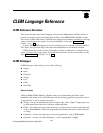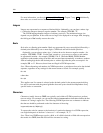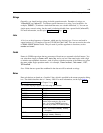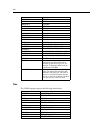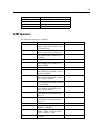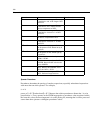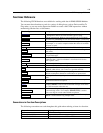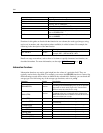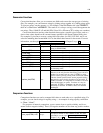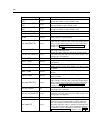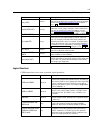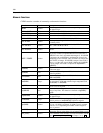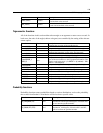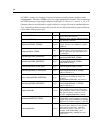
135
CLEM Language Reference
Conversion Functions
Conversion functions allow you to construct new fields and convert the storage type of existing
files. For example, you can form new strings by joining strings together or by taking strings apar t.
To join two st
rings, use the operator ><. For example, if the field Site has the value "BRAMLEY",
then "xx" >< Site returns "xxBRAMLEY". The result of >< is always a string, even if the arguments are
not strings. Thus, if field V1 is 3 and field V2 is 5, then V1 >< V2 returns "35" (a strin g, not a numb er).
Conversion f
unctions (and any other functions that require a specific type of input, such as a
date or time value) depend on the current formats specified in the Stream Options dialog box.
For example, if you want to convert a string field with values Jan 2003, Feb 2003, and so on,
select the ma
tching date format MON YYYY as the de f ault date format for the stream. For more
informa tion, see the topic Setting general op tions for strea ms in Chapter 5 on p. 5 5.
Function
Result
Descriptio
n
ITEM1 >< ITEM2
String
Concatenates values fo r two fields and returns the resulting
string as ITEM1ITEM2.
to_integer(ITEM)
Integer
Converts the storage of the specified field to an integer.
to_real(ITEM)
Real Converts t
he storage of the specified field to a real.
to_number(ITEM)
Number Converts the storage of the specified field to a number.
to_string(ITEM)
String
Converts the storage of the specified field to a string.
to_time(ITEM)
Time
Converts the storage of the specified field to a time.
to_date(ITEM)
Date
Converts the storage of the specified field to a date.
to_timestamp(ITEM)
Timestamp
Converts the storage of the specified field to a timestamp.
to_datetime(ITEM)
Datetime
Converts the storage of the specified field to a date, time,
or timestamp value.
datetime_date(ITEM)
Date
Returns the date value for a number, string, or timestamp.
Note this is the only function that allows you to convert a
number (in seconds) back to a date. If ITEM is a string,
creates a date by parsi ng a string in the current date format.
The date format specified in the stream properties dialog
box must be correct for this function to be successful. If
ITEM is a number, it is interpreted as a number of seconds
since the base date (or epoch). F ractions of a day are
truncated. If ITEM is a timestamp, the date part of the
timestamp is returned. If ITEM is a date, it is returned
unchanged.
Comparison Functions
Compa r is on functions a r e used to compare field values to each other or to a specified string. For
example, you can check strings for equality using =. An example of string equality verification
is: Class = "class 1".
For purposes of numeric comparison, greater means closer to positive infinity, and lesser
means closer to negative infinity. Th at i s, all negative numbers are less than any positive number.
Function
Result
Description
count_equal(ITEM1, LIST)
Integer
Returns the number of values from a list of fields that
are equal to ITEM1 or null if ITEM1 is null. For more
information, see the topic Summarizing Multiple Fields in
Chapter 7 on p. 115.



